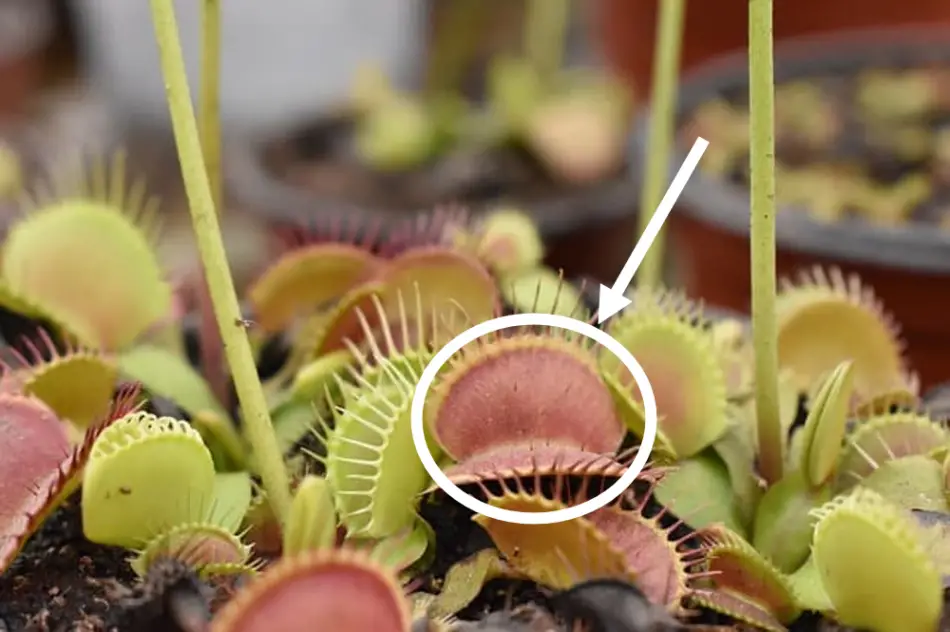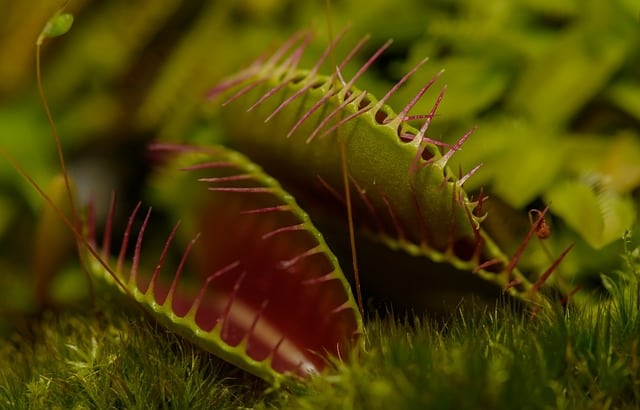The difference between sentient beings and non-sentient beings is almost always clear. The lines start to blur when you observe plants such as Venus flytraps, which are carnivorous in nature.
Venus flytraps are non-sentient beings. They consume live animals, but they are unable to have feelings, thoughts, or feel pain. Venus flytraps capture prey as a result of stimuli, but they lack a nervous system and a brain.
There are many details about Venus flytraps that make it a unique plant. In this article, I will explain the mechanisms that make a Venus flytrap non-sentient.
Are Venus Flytraps Sentient Beings?
Sentient beings can feel and sense. Then, they can interact with the world and other beings.
Humans are sentient, and most animals are also sentient. Only a few animals are non-sentient—for example, corals, sponges, and hydras.
Plants are different than animals. Generally, they are considered non-sentient being s since they do not have nervous systems; they do not have feelings or have a brain.
Venus flytraps are no different than other plants; they are non-sentient. They capture and consume bugs to supplement their diet, but they do not have feelings towards their actions. Instead, Venus flytraps only respond to stimuli.
Because many have seen videos of how Venus flytraps work, they believe Venus flytraps might possess brains or somehow think in a certain way to act as predators. However, that is not true. Venus flytraps do not have brains. They have evolved over the years to perfect mechanisms that are based solely on reaction to stimuli.
This video explains how carnivorous plants developed their carnivorous plant nature. This information is useful for understanding the nature of Venus flytraps.
Some of you might wonder why Venus flytraps are considered just plants and not something in between. Well, in this article, I do not expand on this concept due to brevity. But, I have written a complete article explaining why Venus flytraps are considered plants and not animals. You can access the article here.
Are Venus Fly Traps Conscious?
We are conscious beings. Humans are aware of themselves and the exterior world, including other humans and beings.
Humans are not the only conscious being. Many mammals and birds are considered conscious. For example, dogs, dolphins, or octopuses are known for showing above-average skills to interact with the world around them.
Animals can be conscious, but plants can’t. This scientific paper proves why “Plants Neither Possess nor Require Consciousness.”
Plants, including Venus flytraps, are not conscious beings. Venus flytraps are unaware of themselves and the world surrounding them. They respond to stimuli that allow them to survive.
Venus flytraps respond to stimuli for many different tasks. For example, they follow a light source when they require more light exposure. But, what about more complex behavior? Such as capturing and consuming a bug.
Without a nervous system, Venus flytraps are unable to feel insects crawling inside their leaves. So, how do they capture prey?
The traps of a Venus flytrap are made up of two lobes. In the interior part of each lobe, three thin filaments stand tall. You can see the filaments in the picture below. There are three in each lobe, and they are arranged in a triangular pattern.

When potential prey walks or lands in the trap, it might contact the filaments. The plant only closes when it has received the appropriate stimuli: two touches to the trigger hairs within a short period of time.
Once the plant receives the stimuli, the trap closes regardless of the size of the bug. The plant is not conscious about the prey is caught; it is only responding to stimuli.
Venus flytraps have developed complex predatory mechanisms to capture bugs. Still, they are plants and do not possess characteristics that make us and other animals conscious.
Do Venus Flytrap Feel Pain?
Venus flytraps move when they respond to stimuli, but they are unable to feel pain.
Venus flytraps do not feel pain. They lack a nervous system that would allow them to feel pain or hurt. Still, interactions with other beings can hurt the plant.
Venus flytraps do not feel pain; they are plants. But, we humans can still damage them. For example, touching Venus flytraps causes stress in the leaves, which can start to wither early due to the stress.
The traps of a Venus flytrap close when they receive appropriate stimuli. Sometimes humans want to experience how it feels to be caught inside a Venus flytrap. They put their fingers inside the trap and feel how the plant “bites.” The Venus flytrap does not feel pain when this occurs. But, the plant wastes energy that could be used to capture real prey. When humans play with the traps of a Venus flytrap, the traps decay a lot quicker. New traps grow back, but overall the plant weakens.
Another way Venus flytraps can experience harmful effects is by skipping dormancy.
In their natural habitat, Venus flytraps experience a dormancy period. It is similar to hibernation. During dormancy, Venus flytraps rest for several months and flourish at the start of spring.
When Venus flytraps are grown in warm or tropical climates with no winters, the plant’s overall health gets worse over the years. Since Venus flytraps need cold temperatures to experience dormancy, tropical climates will prevent them from going dormant. Without dormancy, the plant will weaken every year and end up dying after 2-3 years. Again, there is no “pain” involved, but an energy efficiency that leads the plant to perish.
Do Venus Fly Traps Make Noise?
We are used to listening to the sounds of animals, like birds, dogs, and cuts. Plants tend to be just silent, but what about Venus flytraps?
Venus flytraps do not produce noise. They are completely silent beings. They do not possess vocal cords or an auditory system to produce or process sounds.
Venus flytraps, like other plants, do not make noises. Some scientists have proven that plants produce vibrations when they are cut, which could be considered a sound. But, in general, plants do not produce noise or sounds as most animals do.
Do Venus Flytraps Make Noise When They Eat?
Venus flytraps have traps at the end of their leaves. Each trap has two lobes that close to capture prey.
When Venus flytraps close their traps, there is no associated noise. The victim, which is most likely a bug, might move and generate some rumble, but the plant won’t produce sounds.
After the victim has been captured, the plant does not “chew” them. The process of chewing a bug could produce sounds. But, Venus flytraps employ other methods. Since they do not have any teeth, the plant uses its leaves as an external stomach and silently digests the insect.
The traps produce digestive fluids, which are pump to fill the closed trap. The bug might move around for a few seconds. Eventually, it will drown in the enzymes while the plant decomposes the bug and absorbs nutrients slowly.
Do Venus Flytraps Make Noise Die?
Venus flytraps can live for many years. They are hypothesized to live for more than 20 years if they receive proper care or grow in their natural habitat.
When Venus flytraps die, they do not produce sounds. They slowly perish without noise. In most cases, the plant dies due to improper conditions such as lack of water, light, dormancy, or extreme temperatures.
Even though Venus flytraps are meant to live for many years, many Venus flytrap owners will accidentally kill their plants. As a beginner, I lost a few of my plants due to extreme heat exposure. And can test that the plants just dried up without any noise.


